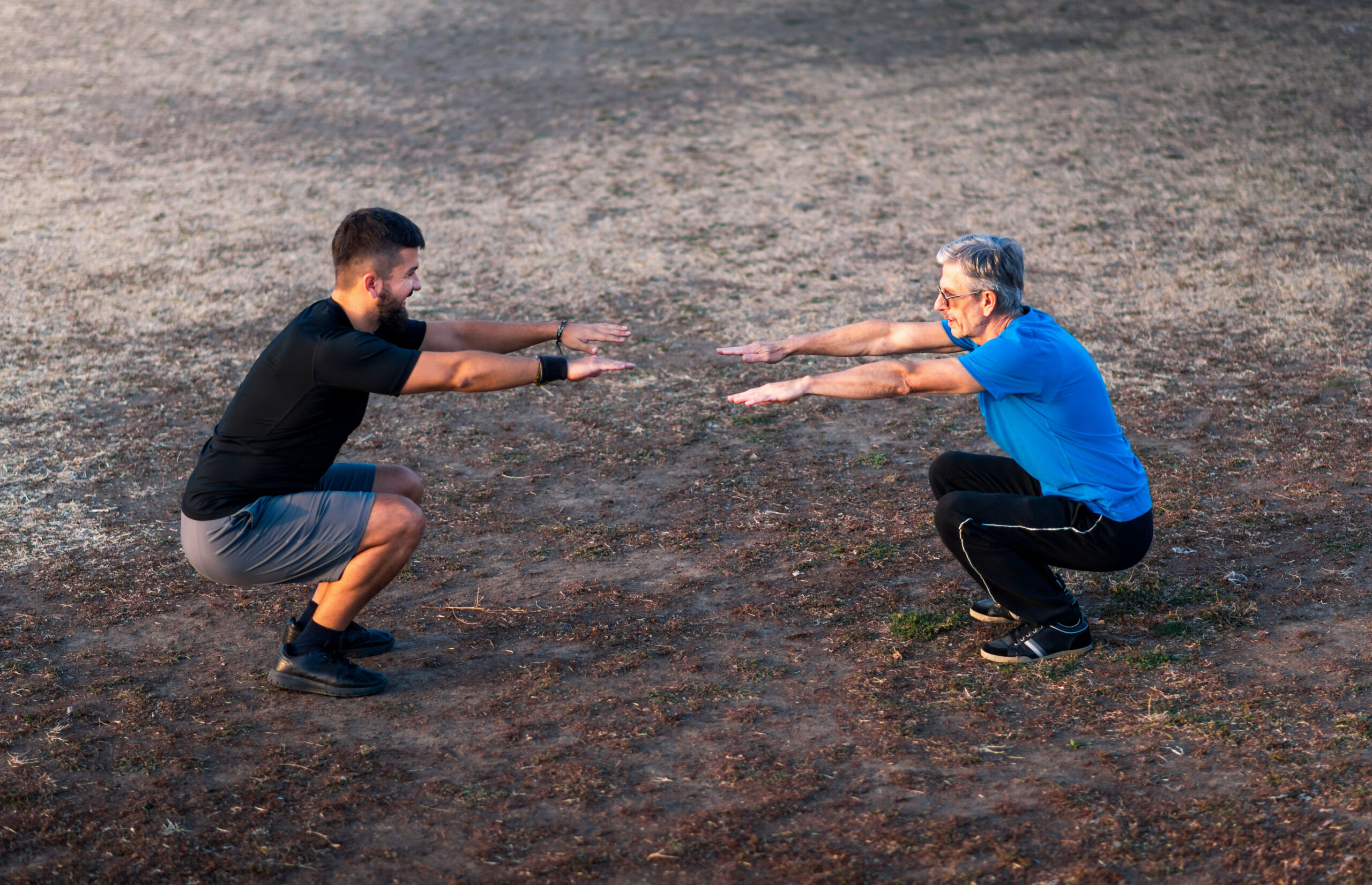One of the benchmarks healthcare practitioners use to determine an older adult’s physical function is the sit-to-standing test in which an individual is instructed to rise to a standing position without using their hands or arms. When asked to rise from a seated position on a chair, many middle-aged and older people have difficulty so the idea of dropping to a squat and getting back up may seem impossible.
As kids, most of us spent hours sitting or squatting on the floor playing and hanging out but in North America especially, adults increasingly spend more time seated on couches or chairs and have lost much of their flexibility and strength from daily movement. That’s why more people are trying the “Slav Squat” – sinking into a deep squat with heels flat on the ground for several minutes throughout the day.
According to a recent Huff Post report, deep squats not only stretch the ankles, knees, and hips to their full range of motion, squatting takes balance, and muscle tone. Not everyone will be able to attain an independent deep squat on their first try, and some may need to hold onto a doorway or railing. Stiff ankles or past injuries may also prevent heels from reaching the ground. People with long limbs may also find it more difficult to squat fully.
Experts don’t recommend staying in a deep squat for long periods of time as the position can cut off blood supply to the legs or create an impingement in the hip. Gentle stretching, balance, and strengthening exercises are important for older adults to prevent falls that can lead to injury whether you can reach a deep squat or not. Grandparents will find it useful to be able to squat down to help tie their grandchild’s shoe or play on the floor, and spending several minutes in a deep squat each day can help to promote greater joint mobility and pelvic floor strength. Even squatting for a few seconds can be a self-test of back, hip, knee, and ankle health.
If squatting causes pain, or instability, it’s important to work with a physical therapist to help regain mobility gradually and safely. For some people squatting can put too much stress on the body and they would do better to practice sit-to-stand exercises from a chair and consciously try to move more and sit less.
Read more about how to safely and gradually achieve a deep squat by following this link to a recent article written by Toronto Physical Therapist, Bahram Jam.






Add Your Voice
0 Comments
Join the Discussion